#Gaeltacht
Text
"Béarlachas"
I've been meaning to write this post for some time now. As a person from the Galltacht (English-speaking Ireland) living and working in the Gaeltacht (Irish-language Ireland), and operating most of my life through the medium of Irish, I can honestly say that English-language Ireland, Second Language speakers of Irish and Learners of Irish tend to have a really skewered understanding of a) what Béarlachas is, b) the different forms it takes and c) what effects/damage/meaning each of its forms holds.
Contents of this post:
•Perceptions of Béarlachas
•Loanwords Vs Béarlachas
•Different Languages, Different Sounds
•Language Purity Vs Language Planning
•Conclusion
Perceptions of "Béarlachas"
Outside of the Gaeltacht, most people's understanding of "Béarlachas", or "Anglicisation" in Irish (which I am deliberately putting between inverted commas!), is the use of so-called "English-language words" in Irish. The usual list people like to list off include:
• Fón
• Teilifís
• Giotár
• Raideo
• Zú* (see Language Purity Vs Language Planning below)
• Carr*
*The ironic thing about the last item being that 'carr' (the word for a personal vehicle) is older than the English-language word 'Car' 🚗.
Second language learners with a bit more exposure to the language deride native speakers, particularly speakers from Conamara, for "using English words and adding '~áil' at the end to make a verb". Several examples being:
• Gúgláil (Google-áil)
• Sioftáil (Shift-áil)
• Sortáil (Sort-áil)
• Péinteáil (Paint-áil)
• Vótáil (Vote-áil)
• Focáilte (F*ck-áilte)
• Supósáilte (Suppose-áilte)
(⚠️NB: it is HIGHLY SIGNIFICANT that I spelt these words in these specific ways in Irish - to be explained below!⚠️)
Other so-called "English language words" in Irish include:
• Veain • Seit • Onóir • Ospidéal • Aláram • Cóta • Plaisteach • Leictreach, 7rl, 7rl...
And what about: "Halla" or "Hata" ??
Loanwords Vs Béarlachas
Before I explain where I'm going with this, I am going to introduce some words that have their origins in other languages, like:
"Seomra" from the Middle French "chambre".
"Séipéal" from the Middle French "chappelle".
"Eaglais" from the Greek "ekklesiastes".
"Pluid" from the Scots "plaide".
"Píopa" from Vulgar Latin "pipa".
"Corcra" from Latin "Purpura" (from before Irish had the sound /p/!)
"Cnaipe" from the Old Norse "knappr".
"Bád" from Anglo-Saxon "bāt".
ALL of these words, like the ones above, came into Irish via the most natural means a language acquires new words: language contact.
The reason WHY the word gets adopted is usually -and this is very important - the word is for something that the culture of the language Borrowed From already has, which is introduced to the language Borrowed Into.
For clarification, what I am trying to say is that languages NATURALLY oppose cultural appropriation by crediting the culture they got a word from by using their word for it...
I.E. "Constructing" a new "pure" word for an item that has come from another culture, is, in effect, a form of cultural appropriation - which is why institutions such as Alliance Française and Íslensk málstöð are at best puritanical, and at worst xenophobic*.
*There is nuance here - there is a difference between institutional efforts to keep a language "pure" (re: those such right-wing English/British and American opinionists who claim that the English language itself is endangered 🙄), and language planning (which also falls under the remit of Íslensk málstöð).
Furthermore, there is also such thing as "dynamic borrowing". This is where technically a language has adopted a word from another language, but has changed its meaning/adapted it to its own need. Let us take two Irish language words for example: "Iarnród" and "Smúdáil"
Iarnród is made up by two words taken from the English language: Iarann, from English language "iron" and Ród, from English-language "road".
Together, these two words mean the English-language term "Railway" - but English has never had the term "Iron Road" to refer to this object.
Similarly, Smúdáil comes from the English-language word "smooth". Only adapted to Irish, and adding the Irish-language verb suffix creates a word which means "to iron (clothing)". 😱
Different Languages, Different Sounds
Every single language on this planet has its own sound system, or "phonology". It is VERY rare for a new sound to be introduced into a different language, and some languages are MUCH more sensitive to what speakers of another language would consider a "subtle" difference, or not a difference at all.
Now...
IRISH HAS DOUBLE THE AMOUNT OF SOUNDS AS THE ENGLISH LANGUAGE!!!!!!!
(^roughly ~ish) I am making this simplistic statement to DRIVE home the fact that what English-language speakers and Learners of Irish hear as "the same as the English", Irish speakers hear a SIGNIFICANT phonetic difference.
All consonants in Irish [B, bh, c, ch, d, dh, f, fh, g, gh, h, l, ll, m, mh, n, nn, p, ph, r, rr, s, sh, t, th] - and YES, séimhiú-ed consonants and double consonants count as separate consonants - EACH have at least TWO distinct sounds. Ever heard of that old rhyme "Caol le caol, leathan le leathan"? Well, the reason why it exists ISN'T to be a spelling tip - it's to show how to pronounce each consonant in a word - which of the two distinct sounds to say.
What I mean to say by this is that, when we adopt a word into Irish, we aren't just "grabbing the word from English and hopping a few fadas on it"; we are SPECIFICALLY adapting the word to the Irish language phonetic system.
I.E. when an Irish language speaker is saying the word "frid" THEY ARE NOT USING THE ENGLISH LANGUAGE WORD "fridge" !!!
The sounds used in the English-language word belong to the English language, and the sounds used in the Irish-language word belong to the Irish language.
As a linguist I get very passionate about this distinction - the AMOUNT of times I have come across a self-important Irish language "learner" from the East of the country come to a Gaeltacht and tell native speakers that they are not using the "official" or "correct" version of a word in Irish just GRATES me to no end. PARTICULARILY as these so-called "learners" cannot hear, or typically have made NO effort to understand phonetic differences between the two languages. (Though honestly, on that point, I cannot wholely blame them - it is a fault on Irish language education as a whole that the differences in sound are hardly, if ever, mentioned, let alone taught!)
Language Purity Vs Language Planning
Moving on, as I mentioned earlier, it is very rare for a sound to be adapted into a new language. As many Irish language speakers and learners know, there is no /z/ sound in (most of the dialects of) Irish.
And yet, somehow, the official, modern translation given for the Irish language for "Zoo" is ...
Zú
Whenever I think on this given translation, I am always reminded of a good friend of mine, a lady from Carna, who used to always talk about "Súm" meetings she used to go on to talk with friends and family during COVID.
This woman only speaks English as a second language, having only ever learnt it at school and only ever used it in professional environments. She does not have the sound /z/, and as such, pronounces words that HAVE a "z" in them as /s/ sounds, when speaking in Irish OR in English.
As such, I often wonder how An Coiste Téarmaíochta can be so diligent in creating and promoting "Gaelic" words for new things, such as "cuisneoir" instead of "frid"; "guthán" instead of "fón" (which is actually pronounced "pón" in Conamara, as that suits the sound system of that dialect better); or "treochtú" instead of "treindeáil" ... And then turn around and introduce sound and sound combinations such as /z/ in "Zú" and /tv/ and /sv/ in "Tvuít" and "Svaedhpáil" 🤢
It's such this weird combo of being at the same time puritanical with regard to certain words, dismissive in regards to vernacular communities, and ignorant with regards to basic linguistic features of the language.
(Especially when, i mbéal an phobail, there are already such perfectly acceptable terms for these kinda words, like Gairdín na nAinmhithe for "Zú; Tuitéar and Tuít for "twitter" and "tweet"; and Faidhpeáil for "Svaedhpáil".)
Conclusion
This really prescriptivist approach by Irish language institutions needs to end. Not only is it not addressing or engaging with the Irish language as it is spoken by vernacular communities, it is creating this really twisted dynamic between second-language Irish speakers who apparently "know better" than first-language and native speakers of Irish.
This is what "Béarlachas" is. Not the natural adaption of words from a language with which Irish in the present day has most contact with. Not the dynamic inventions of native speakers, and even Second-language-as-vernacular speakers, utilising all the linguistic features available to them, whether that be their own dialects of Irish, English, or whatever OTHER languages/dialects are available to them.
"Béarlachas" is the brute enforcement of English language mentalities and an obsession with "purity" onto Irish, a language that has FOREVER adopted and integrated words, features and people into itself.
Gaeilge, like Éire of old, like the Ireland I want to be part of today, is open, inclusive, non-judgemental - knowing where it is coming from, and knowing that its community is its strength and key to how it has and will survive!
#Gaeilge#Béarlachas#postáil fhada#irish language#minority languages#gaeltacht#irish vocab#tráchtas#English#Langblr#Essay
326 notes
·
View notes
Text
If I were to go to a gaeltacht, I would be stranded immediately. I can't hold more than an insanely basic, 2nd class level conversation.
It would be insanely out of my skill range.
I still really want to go to one.
21 notes
·
View notes
Text
An Ghaeilge.
Sometimes I get scared my language will get anglicized and changed completely, with barely any of our culture left.
I really hate that I can’t do more to protect it because there’s barely any platforms for it and everyone thinks it’s pointless.
Maybe I can some day but for now I just have to focus on my personal life. I can still promote it though.
Cuid den am bíonn eagla orm go mbeadh mo theanga galldaithe agus athraithe go hiomlán, le gan ach giota iontach beag dár gcultúr fágtha.
Is fuath liom nach bhfuil níos mó le déanamh agam le é a chosaint mar níl aon méan ann le é a fhoghlaim ar agus síleann gach duine go bhfuil sé gan ciall ar bith.
Beidir lá éigin thig liom níos mó a dhéanamh ach don t-am i láthair caithfidh mé díriú isteach ar saol pearsanta s’agam. Thig liom go fóill é a cur chun cinn, áfach.
#gaeilge#why is it like this#istg im frustrated asf rn and i don’t know why#tá mé comh cantalach sin anois 😭#vent#an gaeilge#irish#gaeltacht
17 notes
·
View notes
Text
#OTD in 1883 – Pádraig Ó Siochfhradha, writer under the pseudonym ‘An Seabhac’ and promoter of the Irish language is born in Dingle, Co Kerry.
Pádraig Ó Siochfhradha was born in the Gaeltacht near Dingle in Co Kerry in 1883. Pádraig Ó Siochfhradha went on to become an organiser for Conradh na Gaeilge, cycling all over the countryside to set up branches and promote the Irish language. As a writer, he took the pen-name ‘An Seabhac’, the Hawk, writing books including ’An Baile Seo ‘Gainne’ (1913) and ‘Jimín Mháire Thaidhg’ (1921), both of…
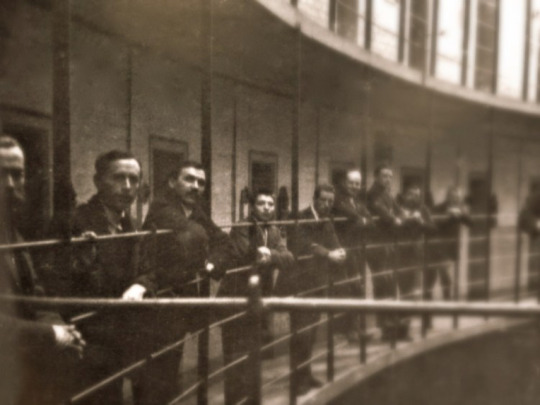
View On WordPress
#Activist#An Seabhac#Author#Éamon De Valera#Bere Island#Co. Cork#Co. Dublin#Co. Kerry#Conradh na Gaeilge#Dingle#Donnybrook#Durham prison#England#folklorist#Gaelic League#Gaeltacht#Ireland#Irish Civil War#Irish History#Irish War of Independence#Pádraig Ó Siochfhradha#Politician#Seanad#Senator#Storyteller#Teacher#Writer
9 notes
·
View notes
Text
Is 'á' before verbs in irish the same as 'bheith ag'?
sorry,this is a really stupid question, i'm just a bit confused on when to differentiate using them, because i know you use 'bheith ag' when saying smthn like 'is maith liom bheith ag peil'. and that 'bheith' means 'to be', and that 'ag' sort of adds an english 'ing' to the verb,(like saying 'doing' instead of 'do' if im not making sense) but 'á' seems to do that as well and now im kinda confused
my only idea right now is that 'bheith ag' is only used for opinion phrases?idk, maybe its a dialect thing?
17 notes
·
View notes
Text
in light of all the discussion around the banshees of inisheerin, please keep in mind the people on the aran island.
while the film is expected to bring a lot of tourism to the area, there was a huge problem with the filming process on the islands.
currently, many first and second generation islanders are living in caravans and temporary accommodation on the islands due to strict planning permission laws. because the stone walls of the islands are considered culturally significant heritage, people born and brought up on the islands cannot build houses or live there, contributing to a dying island.
the set built for this film was granted permission ridiculously fast, to build a semi permanent structure which many islanders had huge issue with. Full disclosure, I don't live on oileáin mhór but I was there the summer of filming.
the aran Islands are one of the last true Gaeltachts or Irish language speaking areas, and the planning restrictions are killing it off. while its not terribly relevant to the movie, I do think a conversation is worth having.
23 notes
·
View notes
Text
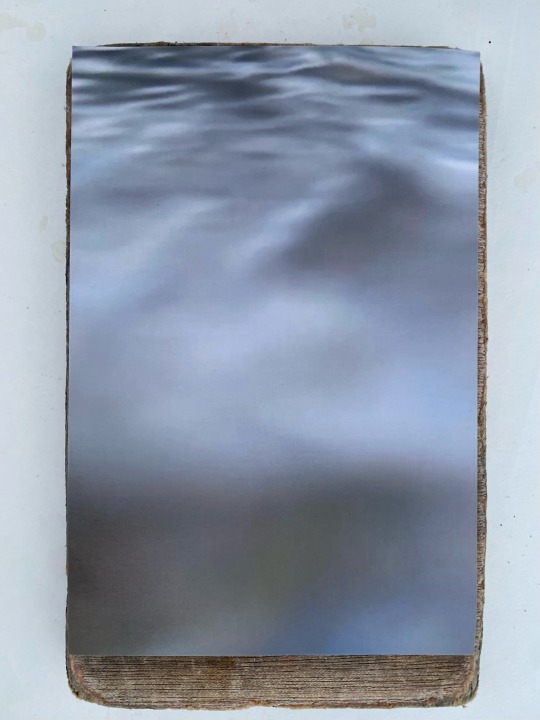
S E A S K I N
#art#artists on tumblr#studio#andrew duggan#sea#ireland#skin#photography#syros#greece#gaeltacht#kerry#islands
2 notes
·
View notes
Text

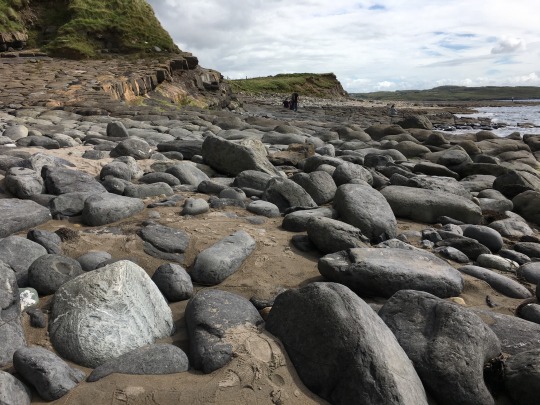


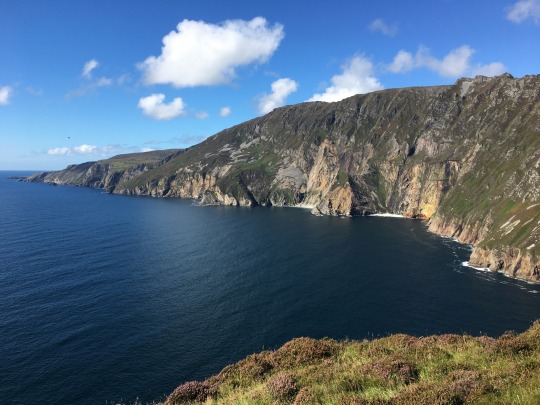
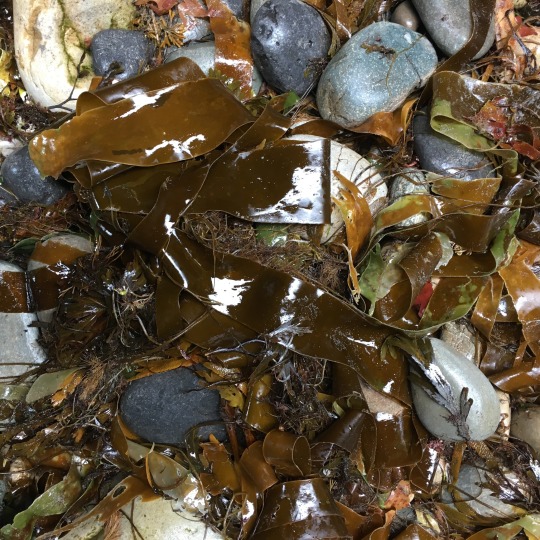




Some more Thisby vibes from Glencolumbkille this summer for the day that’s in it
#the scorpio races#maggie stiefvater#ireland#old thisby#photography#the scorpio races fandom#donegal#gaeltacht
23 notes
·
View notes
Text
me and my friend were trying to figure out how to spell the irish way of saying 'come here' and honestly we were so confused because both of us have only heard it spoken but never seen it written
so we were like 10 minutes trying to guess what words the sounds 'gull ya' could possibly be (best idea was along the lines of 'go leith')
only for teanglann.ie to come along with

the first word there I would've read as 'gow' and it just kinda shows that native speakers (like my friend) can struggle so much with written languages if their only basis is the oral language
#sorry just a little thinky think on the irish language#like ive been hearing that phrase my entire life and have never been able to connect actual words to it#irish#language#ireland#gaeilge#gaeltacht
8 notes
·
View notes
Text
NOLLAIG NA mBAN SHONA DHAOIBH!!
Nollaig na mBan - Womens' Christmas - Little Christmas
Dhá lá déag tar éis Lá na Nollag, ceiliúraimid in Éirinn Nollaig na mBan. Ar an lá seo, déanann fir obair an tí - obair a déanadh mná don chuid is mó san aimsir atá caite (agus leanann an nós sin fós, in ainneoin an sár-obair atá daoine áirithe ag déanamh leis an gcás sin a athrú!!)
Tá sé mar nós againn fós an Crann Nollag a choinneáil suas go dtí an lá seo, agus tá traidisiúin bheaga ag gach teaghlach in Éirinn don lá seo. Cén traidisiúin atá agaibhse?? ☺️😄
🎄🤶🕯️🎁🤴🏾☃️
Twelve days after Christmas Day, we in Ireland celebrate "Womens' Christmas". On this day, men do the housework - work done mostly by women in times past (and typically still today, despite the great work particular people are doing to change that situation!!)
It's still a tradition to keep the Christmas Tree up until after this day, and every Irish household has their own little traditions for this day. What are your traditions for Womens' Christmas?? ☃️
#gaeilge#irish language#gaeltacht#Christmas#traditional gender roles#Traditions#gender#minority languages#Ireland#women#feminism#culture
35 notes
·
View notes
Text
youtube
Spéac-fhógra le thaispeáint i bpictiúrlanna díreach sula tosnaíonn an phríomh-scannán. Cuireann sé i gcuimhne don lucht féachana go bhfuil gá le chiúnas.
Léirithe ó thús go deireadh trí Ghaelainn i nGaeltacht Oileán Chléire, bailíonn an fógra le chéile trí ghné a mbaineann go mór leis an oileán: fairtheoireacht éan, áilleacht agus, go tragóideach, fuíollach tithe folmhaigh.
Our latest project is a spec commercial intended to be screened in cinemas right before the main film begins. It reminds the audience of the need for quiet.
Produced beginning-to-end in the Irish language on the Gaeltacht island of Cape Clear, the commercial brings together three things the island is known for: birdwatching, beauty and a tragic abundance of vacant houses.
1 note
·
View note
Text
Wifesharing
Hot Amateur Public Handjob Mit Perversem Alten Sack Kowalski
Harry Potter e o Prisioneiro de Azkaban
42nd Street Hookers 1 - Scene 1
Ass blessed Amirah Adara needs an American dick
Small tits blonde girl gets nailed on the floor
Cakes crying
Sweet Teen Emma Hix and her Step Mom Dee Williams Lesbian Blondies Licking Together
Hot Guy Jerking Off With Butt Plug
hot skype sex chat
#Gold#merry-minded#Swaledale#pornological#indiscrete#vegetant#amphitoky#actualism#minitrains#alaska#merfold#subcontracting#uncubically#acetylation#helsinki#round-cornered#seduceability#unidenticulate#nondexterously#Gaeltacht
0 notes
Text
Pádraig Ó Siochfhradha | An Seabhac
Pádraig Ó Siochfhradha was born in the Gaeltacht near Dingle in Co Kerry in 1883. Pádraig Ó Siochfhradha went on to become an organiser for Conradh na Gaeilge, cycling all over the countryside to set up branches and promote the Irish language. As a writer, he took the pen-name ‘An Seabhac’, the Hawk, writing books including ’An Baile Seo ‘Gainne’ (1913) and ‘Jimín Mháire Thaidhg’ (1921), both of…

View On WordPress
#Activist#An Seabhac#Author#Éamon De Valera#Bere Island#Co. Cork#Co. Dublin#Co. Kerry#Conradh na Gaeilge#Dingle#Donnybrook#Durham prison#England#folklorist#Gaelic League#Gaeltacht#Ireland#Irish Civil War#Irish History#Irish War of Independence#Pádraig Ó Siochfhradha#Politician#Seanad#Senator#Storyteller#Teacher#Writer
8 notes
·
View notes
Text
A weekend in the Gaeltacht! 😍🇮🇪 Oideas Gael, Gleann Cholm Cille
youtube
#irish#gaeilge#gaeilge i mo chroí#ireland#éire#gaeltacht#oideas gael#gleann cholm cille#videos#Youtube
1 note
·
View note
Text
they should invent a gaeltacht that is easy and convenient for a disabled non-driver to travel to
#contemplating travel to donegal again and wishing i had a goddamn charioteer#also remembering how wildly inaccessible most gaeltacht courses seem to be#bc apparently none of them were set up for people with mobility impairments#let alone dietary restrictions and the inability to drive#:'(#i mean revitalise irish and grow the gaeltachts and support the urban language#and this will fall into place naturally#but in the short term WHOMST will drive me to donegal
21 notes
·
View notes
Text
Photographing variables ‘L E S E D I T I O N B R A U N & C. - P A R I S’
When recently I was looking at the theatre space in Culín, Dingle, Kerry with Rachel Holstead, arts administrator for our Gaeltacht ahead of an install, she pointed out boxes of books left by the late Daryl Broe in an adjacent corridor, hoping I might find a use for them, urging me to take some [what do we do with what is left behind]. Daryl had worked as a cameraman, reporter, editor among other things in the theatre space. He died last year at home alone, somewhat sadly; it was a number of days before someone found his body. And now some of his books lay waiting …many of which were art and politically related. One particular book grabbed my attention.
It was a small old, dog eared French book on ‘la Sculpture Grecque’ a volume of a collection of books on art ‘les maitres’. I was initially attracted to the rough matt printed pages, thick. I flicked through it and put in my car where it sat for a couple of weeks until one morning while waiting for my daughters at the Kerry School of music I picked it up and poured over the images of the figurative sculptures housed I might add in the various museums around the world, separated, fragmented, a colonial legacy; the various photographers forgotten. I liked how the type was set and how the photographs were framed and laid out by the picture editor and/or designer. Absentmindedly, instinctively and perhaps playfully I started folding the pages in on themselves. I was dividing the images in half vertically, presenting only half the image to juxtapose it to the next page and subsequent pages. I liked the accidental contrasts. It made me think about the original designer and their design decisions; the geometry of the images and how they proportionally suited the page. I began to think about the book and its modular accidents sculpturally, architecturally even, that it could be picked up by anyone, thumbed through, handled and played with. Each holder having a different experience.
The book acted as a book of possibilities; a modular sculptural collage.
Later, just before install, I would come across another of Daryl’s books, this time on Michelangelo , again its texture and image quality I loved. I purposely this time folded the pages in the same manner to present new possibilities. And also with the descriptive text on the left hand page, revealing a dadaist or situationalist type of text.

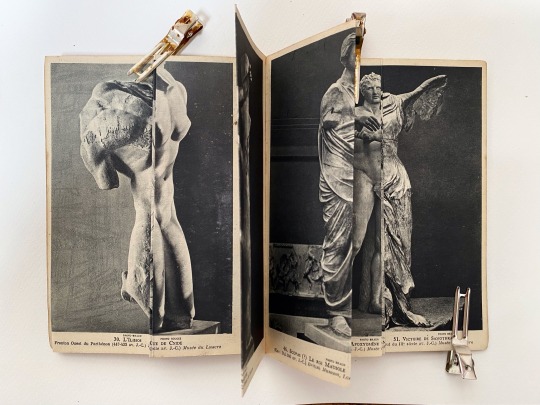

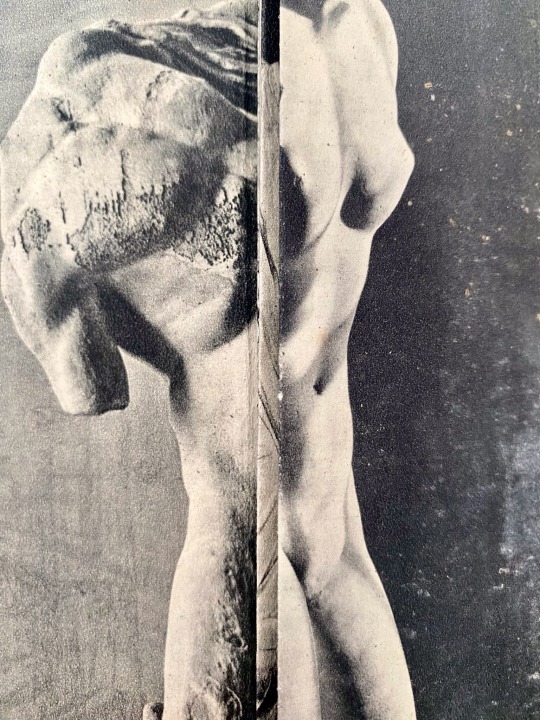
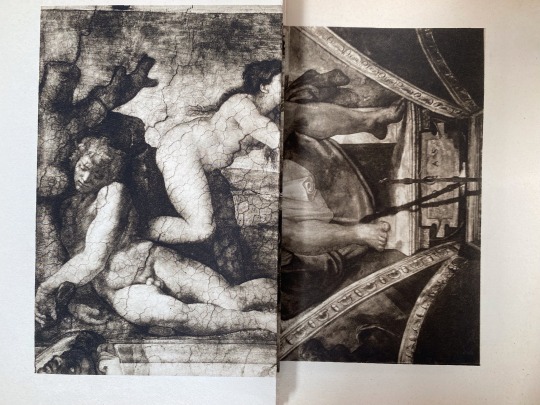


#art#artists on tumblr#studio#andrew duggan#gaeltacht#internationale situationniste#modular#vatican#michalengelo#france#sistine chapel#Greece sculpture#art print#garden of eden#god#la pieta#venus#la femme
14 notes
·
View notes